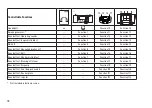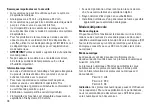
4
Informationen zum Vorbild
Die schnellfahrende Güterzuglok der Baureihe 41 gehört zu
den späten Entwicklungen im Einheitslokprogramm der Deut-
schen Reichsbahn (DRG). Verschiedene Baugruppen waren
identisch mit den etwa gleichzeitig entwickelten Baureihen
06 und 45.
Wie bei anderen Maschinen zeigte auch der St47K-Kessel
der BR 41 nach wenigen Jahren Ermüdungserscheinungen,
da der Kesselbaustoff nicht alterungsbeständig war und
schweißbrüchig wurde. Daher wurde ab Herbst 1941 zu-
nächst der Kesseldruck auf 16 bar reduziert. Ferner beschaff-
te die DRG 1943/44 insgesamt 40 Ersatzkessel, gefertigt aus
dem deutlich beständigeren Kesselbaustoff St34.
Nach dem Zweiten Weltkrieg verblieben 220 Loks bei der
DB und 124 bei der Deutschen Reichsbahn (DR) der DDR.
Da beide Staatsbahnen auf die Baureihe 41 nicht verzichten
konnten, wurden zahlreiche Maschinen mit neuen Kesseln
versehen. Bei der DB wurden 102 Maschinen umgebaut,
sie erhielten geschweißte Hochleistungskessel mit Ver-
brennungskammer, 40 Maschinen überdies eine Ölhaupt-
feuerung. Bei den nicht umgebauten Maschinen konnten
durch die Beibehaltung des gesenkten Kesseldrucks die
Kesselschäden in Grenzen gehalten und mit zwischenzeitlich
deutlich verbesserten Schweißtechniken auch weitgehend
behoben werden.
Die Altbaukessel-41er wurden größtenteils in den 1960er-
Jahren ausgemustert und nur wenige Loks erlebten 1968
noch die EDV-gerechte Umzeichnung in die Baureihe 041. Als
letzte Maschinen wurden im September 1970 die 041 253 und
334 beim Bw Köln-Eifeltor abgestellt und am 27. November
1970 ausgemustert.
Information about the prototype
The class 41 fast freight locomotive was part of the late devel-
opments in the German State Railroad‘s (DRG) standardized
locomotive program. Different components were identical
with the classes 06 and 45 developed at about the same time.
As with other locomotives, the St47K boiler on the class 41
exhibited after a few years traces of metal fatigue since this
boiler material was not resistant to aging and became sus-
ceptible to breakage at weld points. For that reason, the boil-
er pressure was initially reduced to 16 atmospheres or 232
pounds of pressure per square inch starting in the fall of 1941.
Furthermore, the DRG purchased a total of 40 replacement
boilers in 1943/44 that were made of the much more durable
St34 boiler material.
After World War II, there were 220 locomotives on the DB‘s
roster and 124 on the GDR‘s German State Railroad (DR)
roster. Since both government railroads could not do with-
out the class 41, numerous units were equipped with new
boilers. On the DB 102 units were rebuilt and equipped with
welded, high-performance boiler with a combustion cham-
ber. Moreover, 40 units were converted to oil firing. On the
units not rebuilt boiler damage could be kept within limits by
not exceeding the lowered boiler pressure. Improved weld-
ing techniques in the meantime took care of the problems for
the most part.
The class 41 units with the older design boiler were retired
for the most part in the Sixties and only a few units lasted
until the computer renumbering system change to the class
041 in 1968. Road numbers 041 253 and 334 were stored at the
maintenance facility at Cologne-Eifeltor in September of 1970
and were retired on November 27, 1970.
Содержание 22375
Страница 1: ...Modell der Dampflok BR 41 Altbau 22375 D GB F USA NL ...
Страница 2: ...2 ...
Страница 28: ...28 7226 ...
Страница 30: ...30 ...
Страница 31: ...31 1 1 3 2 ...
Страница 32: ...32 40h ...
Страница 33: ...33 Trix 66626 20h ...
Страница 34: ...34 1 2 ...
Страница 35: ...35 ...
Страница 37: ...37 Details der Darstel lung können von dem Modell abweichen 19 13 16 18 11 11 15 15 16 4 27 27 27 23 28 23 ...
Страница 38: ...38 ...





































